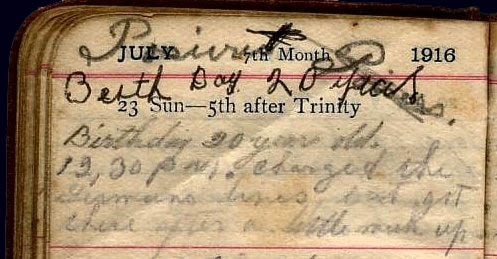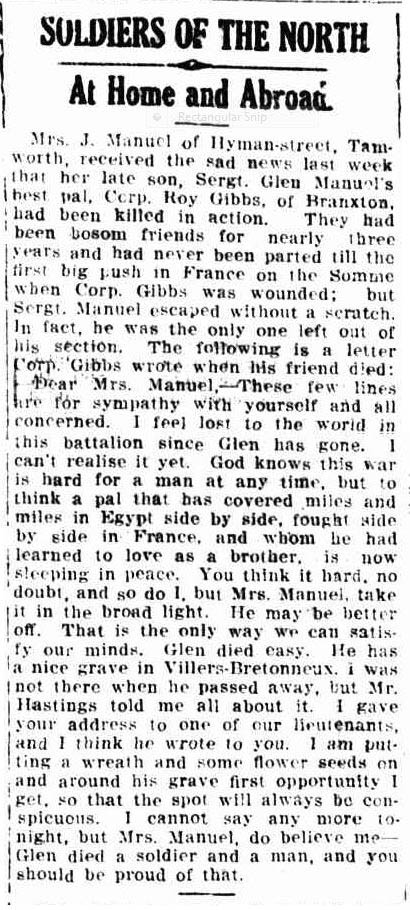1st Infantry Battalion Gallipoli, Egypt, France and Belgium 1915-16 3rd Machine Gun Battalion France 1918
Harry Russell
|

How did he fit in? What was the link? See my Introduction below
1915
|
|
1st Infantry Battalion Gallipoli, Egypt, France and Belgium 1915-16 3rd Machine Gun Battalion France 1918
Harry Russell
|

How did he fit in? What was the link? See my Introduction below
1915
|
|
|
In 2004 I stood and looked along the wall of the Commemorative Courtyard known as the 'WW1 Roll of Honour' at the Australian War Memorial, Canberra. On this wall, inscribed in bronze, are the names of the 60,000 or so Australians, all of them volunteers, who perished in the Great War. The supposed war to end all wars. The two soldiers of principal interest to me, served in the 53rd Infantry Battalion, whose memorial was situated almost at the opposite end of the wall from where I stood. This meant a sombre walk, firstly past the fallen from the 1st Battalion, (of special interest to me) then past the names of the thousands of Australian dead from Battalions 2 to 52 to get there. Then luck was with me - I could fit the names of my two soldiers, along with the 53 Battalion header, in the one photo.
'The 53rd Battalion was raised in Egypt on 14 February 1916 as part of the doubling of the AIF. Half of its recruits were Gallipoli veterans from the 1st Battalion, and the other half, fresh reinforcements from Australia.' (AWM)
The two soldiers of interest to me were 'fresh reinforcements from Australia'. Gibbs O.R. and Manuel G.S.H. had both enlisted on the same day, July 14th 1915 at Liverpool, Sydney and were assigned to the 11th re-inforcements to the 1st Battalion AIF. The 1st Battalion, along with all the other Australian military units at Gallipoli, had suffered heavy losses, and a steady flow of replacements from Australia was required.
First cousins Harry Russell and Roy Gibbs from Branxton had also enlisted together
Maitland Daily Mercury (Branxton) Friday 16th July 1916
|

Oliver Roy Gibbs (Roy) from Branxton, near Maitland, NSW, was a collier training to be a mine surveyor, and almost 22 when he enlisted. He is referred to in military terms as 3326 Corporal Oliver Roy Gibbs MM. (the MM. meaning Military Medal which is awarded for bravery). The war proper for Roy Gibbs started at the now infamous Battle of Fromelles on July 19th 1916 when his 53rd Battalion had been decimated. 'The 53rd was part of the initial assault and suffered grievously, incurring 625 casualties, including its commanding officer, amounting to over three-quarters of its attacking strength'. (AWM) 
The original graves of the fallen were eventually exhumed and replaced in the many official war cemeteries that dot the countryside.
In 2005 I visited the grave of Glen Manuel at Crucifix Corner Cemetery, Villers Brettoneux, next to the busy A29/E44 Autoroute. I also visited the grave of Roy Gibbs at the Tincourt British Cemetery situated in a not so busy area near the village of Tincourt, some 50 kilometres to the East. This was 50 kilometers closer to the Hindenburg Line, the last ditch defense of the Germans, and the loss of which was their ultimate defeat. The image above (with pipe) of Roy Gibbs was a solitary photo from a family photo album and was always a bit questionable. The image and caption from our online 'treasure' TROVE confirms that this is the same bloke. The Newcastle Sun Monday 4th November 1918
(This gem of a snippet was tracked down by Michael Lancaster, great grandson of Harry Russell.)
|
Glen Selby Harold Manuel (Glen) came from a small family farm 'Kia Ora', near Kootingal via Tamworth in the New England district of NSW. Both of Glen's maternal grandparents, Scmidts and Dorings, were German immigrants. (The family name Manuel is almost certainly of Portuguese origin). Glen was 19 when he enlisted, his occupation given as labourer. The war proper for 3411 Sergeant Glen Selby Harold Manuel also began in earnest at the Battle of Fromelles, and according to a newspaper report was 'the only one left out of his Section'. (see below) Glen survived gunshot wounds, some severe, to both legs, an arm, and his neck, at the Second Battle of Bullecourt in May 1917, but his war ended on April 15th 1918 when he died of shrapnel wounds in the back at Villers-Bretonneux, during fierce fighting when the AIF retook the town and halted the German advance on Amiens.
As soon as we are relieved I will make enquiries as to where your son was buried. Glen died shortly after being wounded and was not in pain. I am a Sergt in the same Coy and was with him where he was wounded. I handed all his belongings to the Commanding Officer to be forwarded on to you.
Sgt Frank McGrath mentions Sgt Glen Manuel's 'belongings'. It seems Glen Manuel was a bit of a bower bird. Memorabilia from his collection was eventually placed in a display case by his younger brother Russell.
|
Mary Ann 'Molly' Gibbs, (later Mary Ann Russell), mother of Roy Gibbs, and Winnie Manuel mother of Glen Manuel also became friends, no doubt united in shared grief for their lost sons. Harry Russell was related 'twice over' to 'Molly'. Roy Gibb's father Thomas, was brother to Harry's mother Eliza. 'Molly' became a widow in 1896 and subsequently married Alfred Russell in 1900, brother to Harry's father George. During a visit to 'Molly' at Branxton from her home near Tamworth sometime in 1919, Winnie Manuel's accompanying daughter Clarice met 'Molly' Gibb's nephew Harry Milton Russell, also from Branxton.
Winnie Manuel and Molly Gibbs
My maternal grandparents, Harry Russell and Clarice Manuel, married at Tamworth, NSW in August 1921. They had three daughters. Renee, Betty (who died in 1933 aged 7 from pneumonia), and Jean (my mother). Harry died in 1959 aged 62, so I only have fairly vague memories of him. I was born in 1952. Mum remembers him as quiet and withdrawn most of the time. Probably he had seen and experienced too many horrors as a young man. Harry was never a member of an R.S.L. He never attended ANZAC day celebrations. Apparently he just wanted to forget. This was not unusual.
|